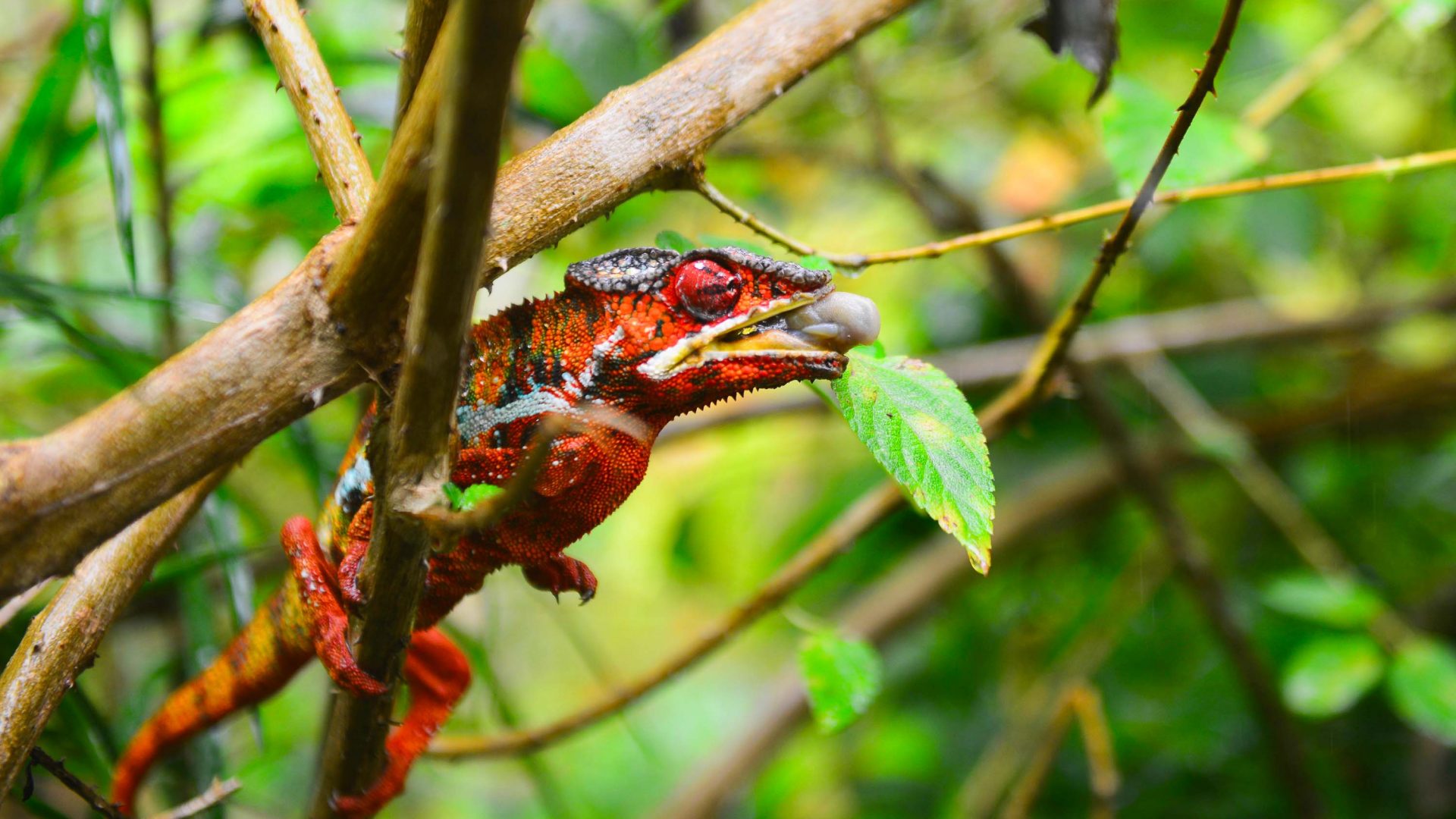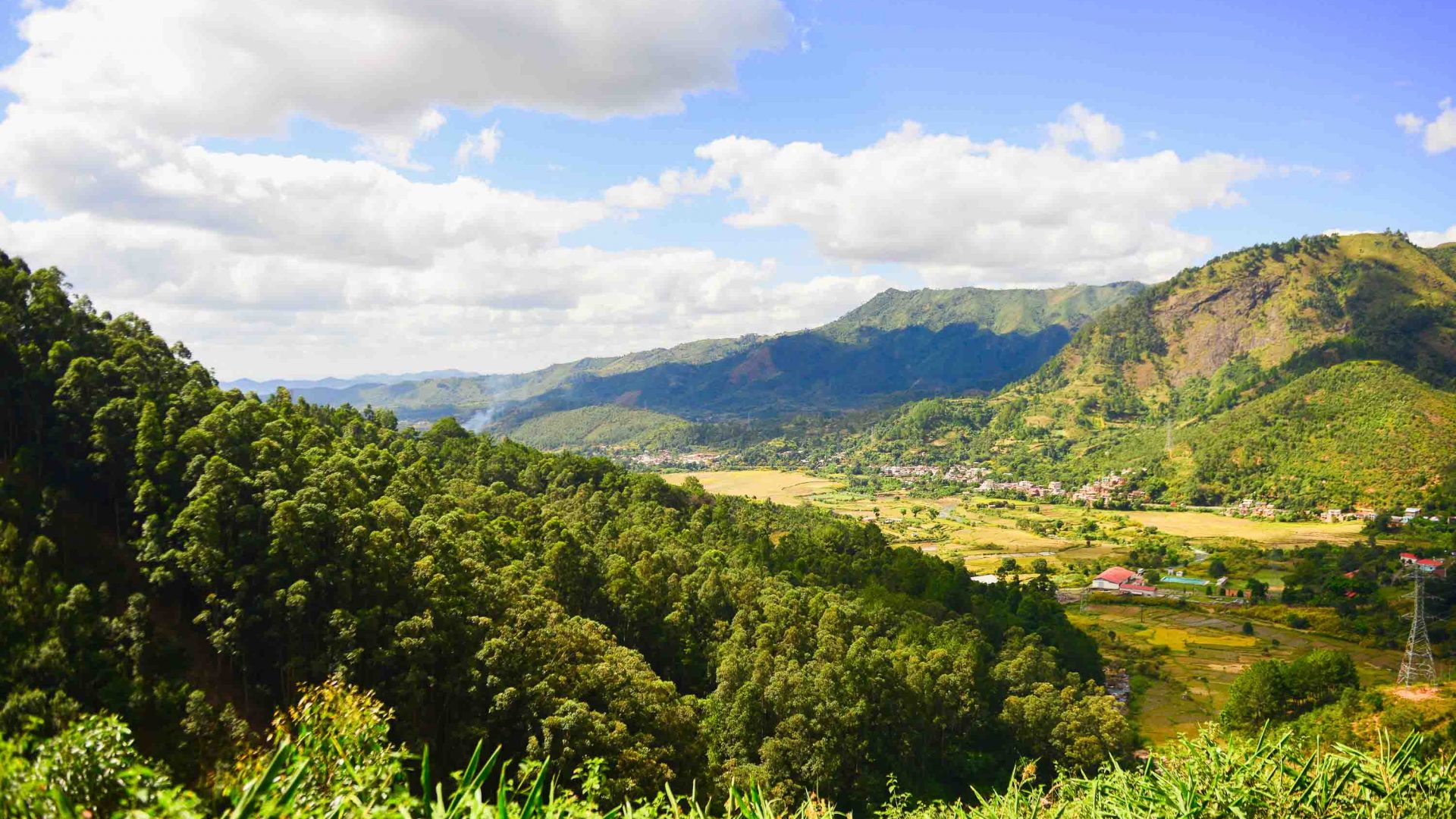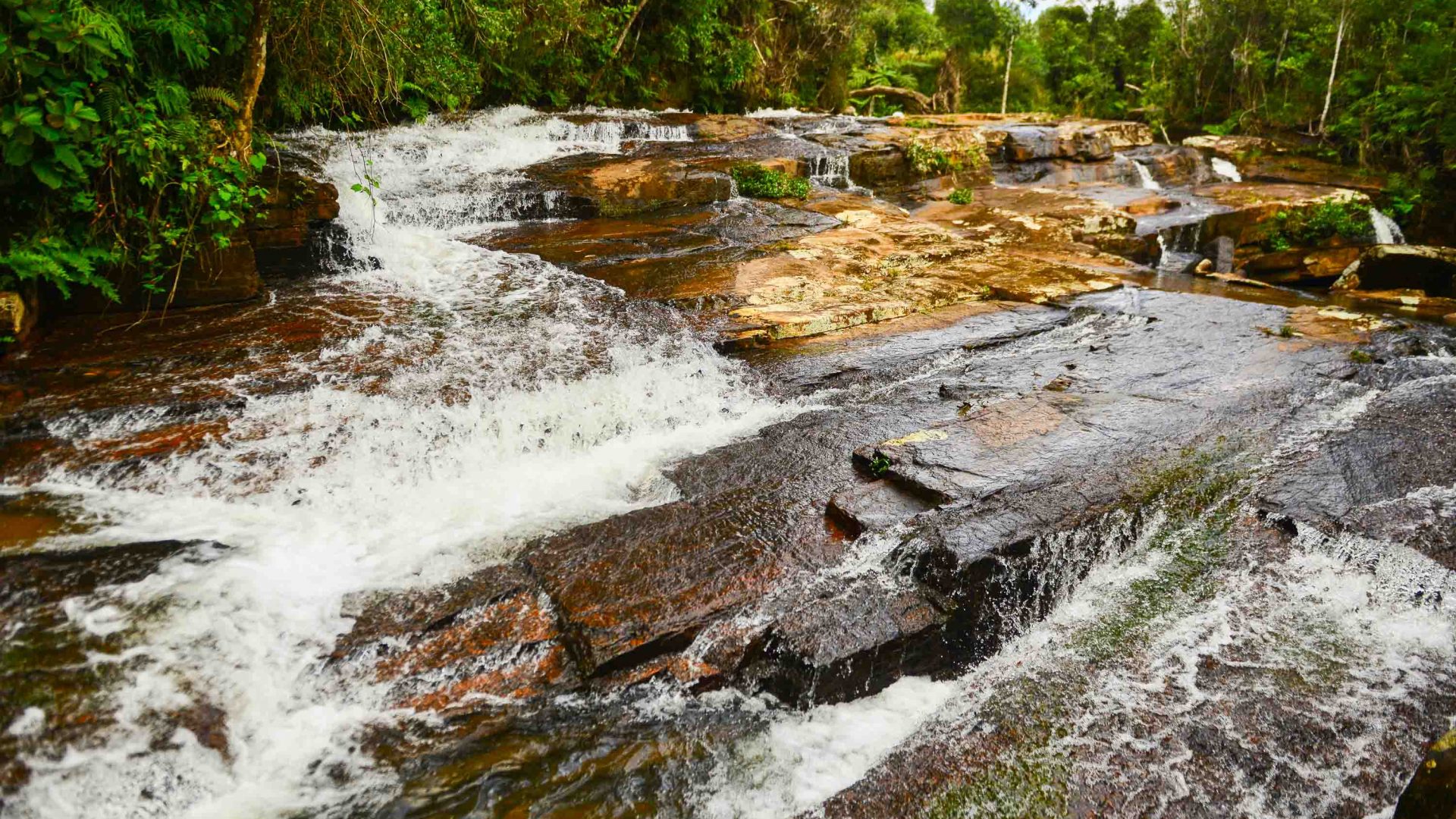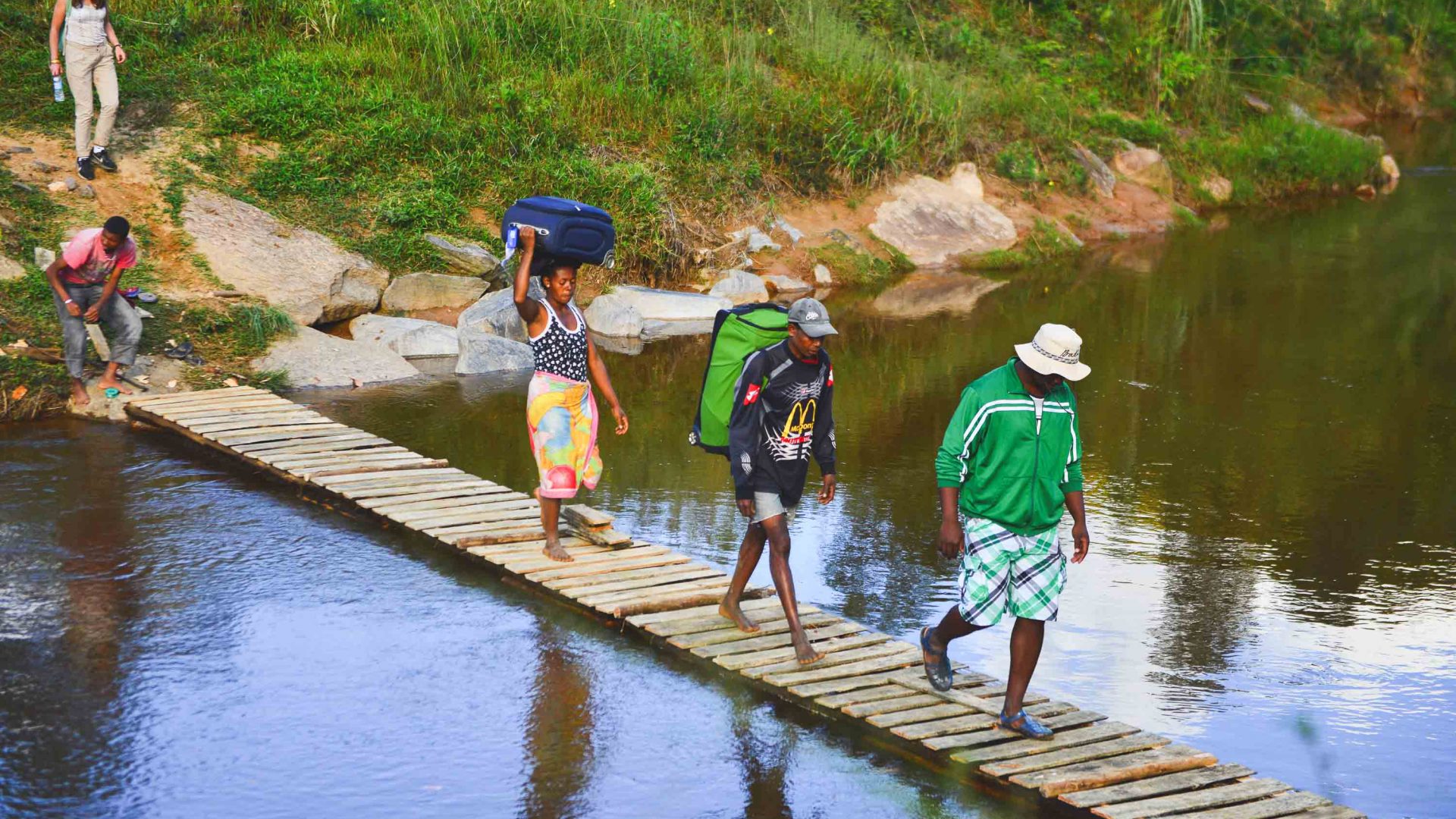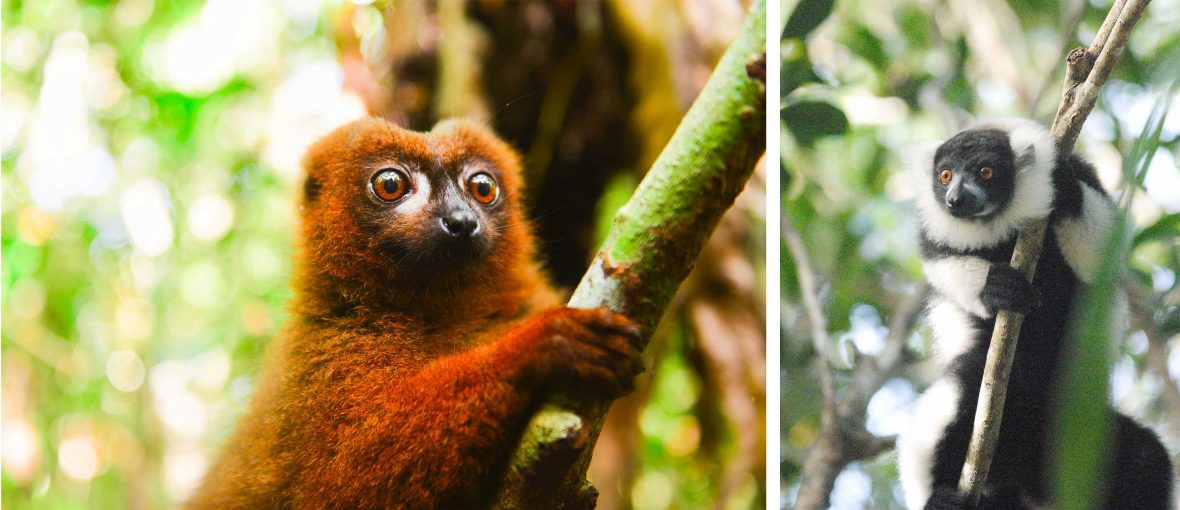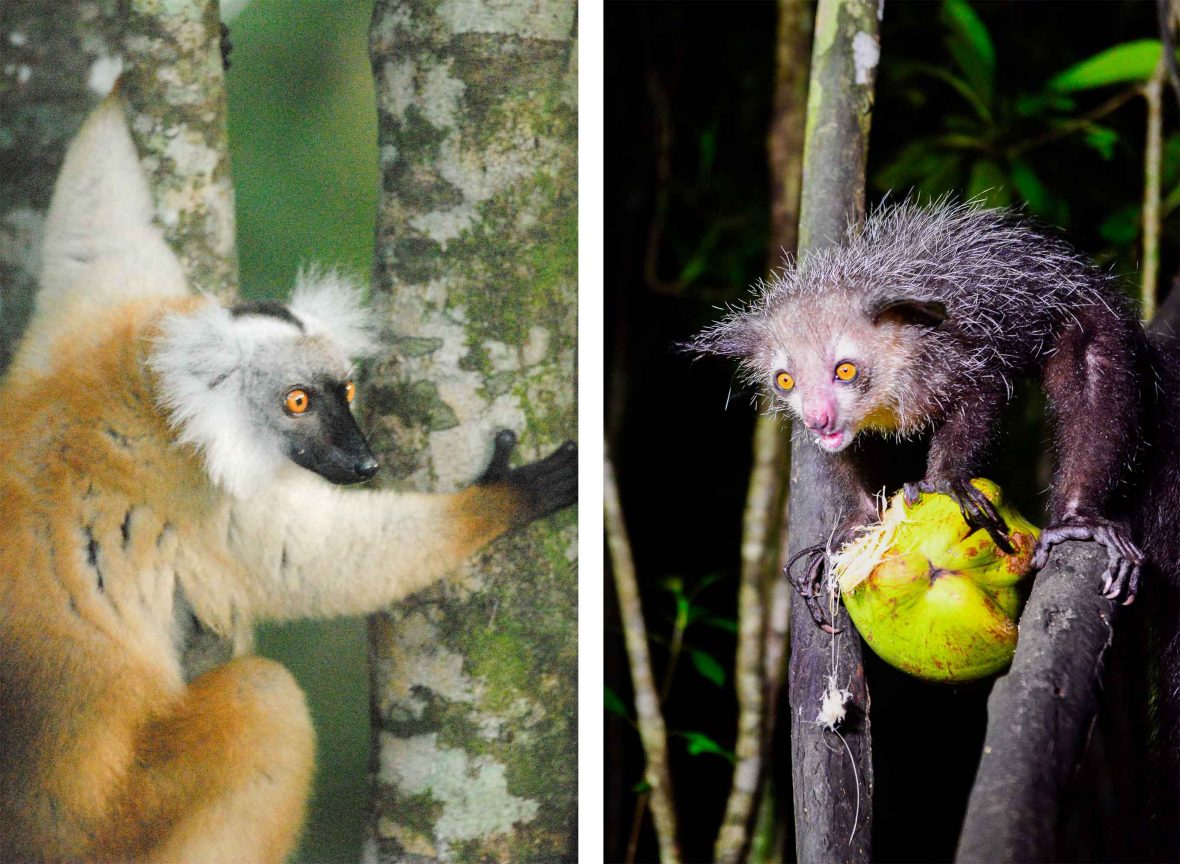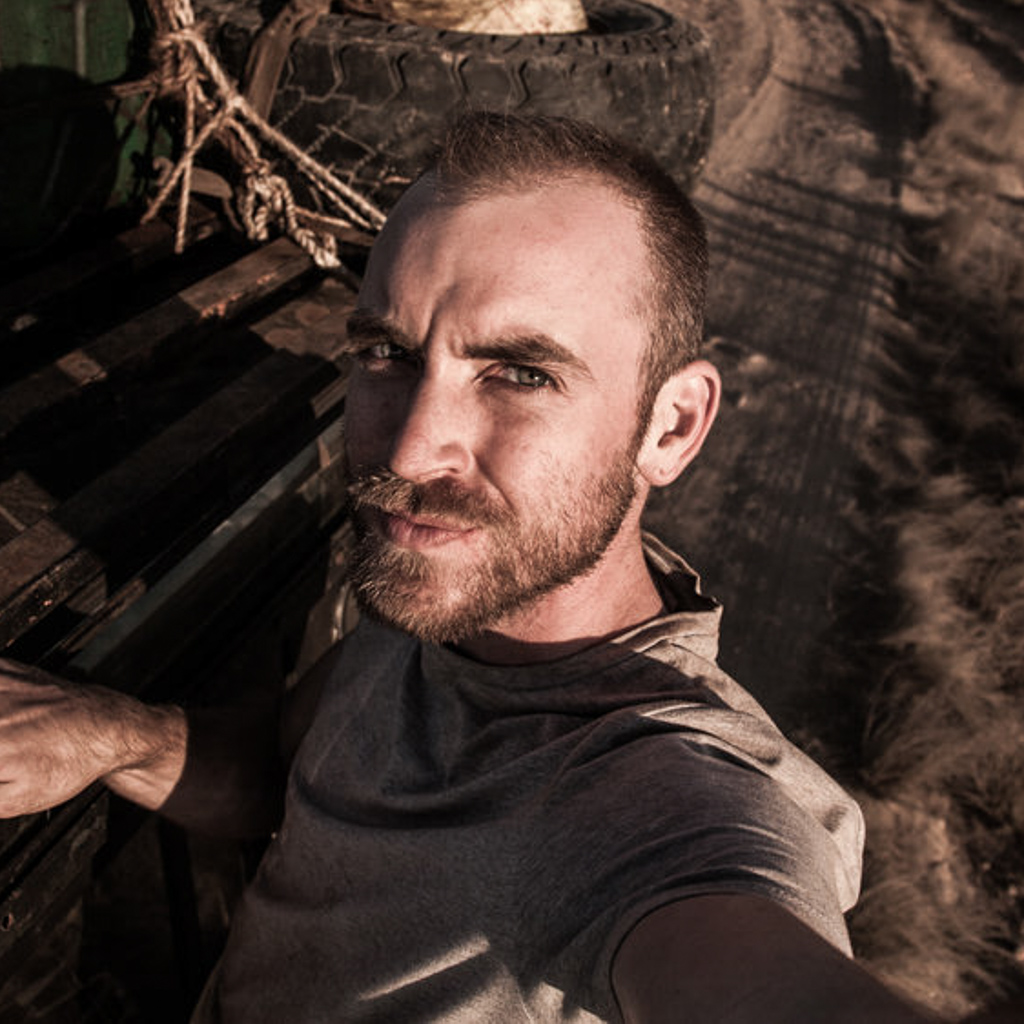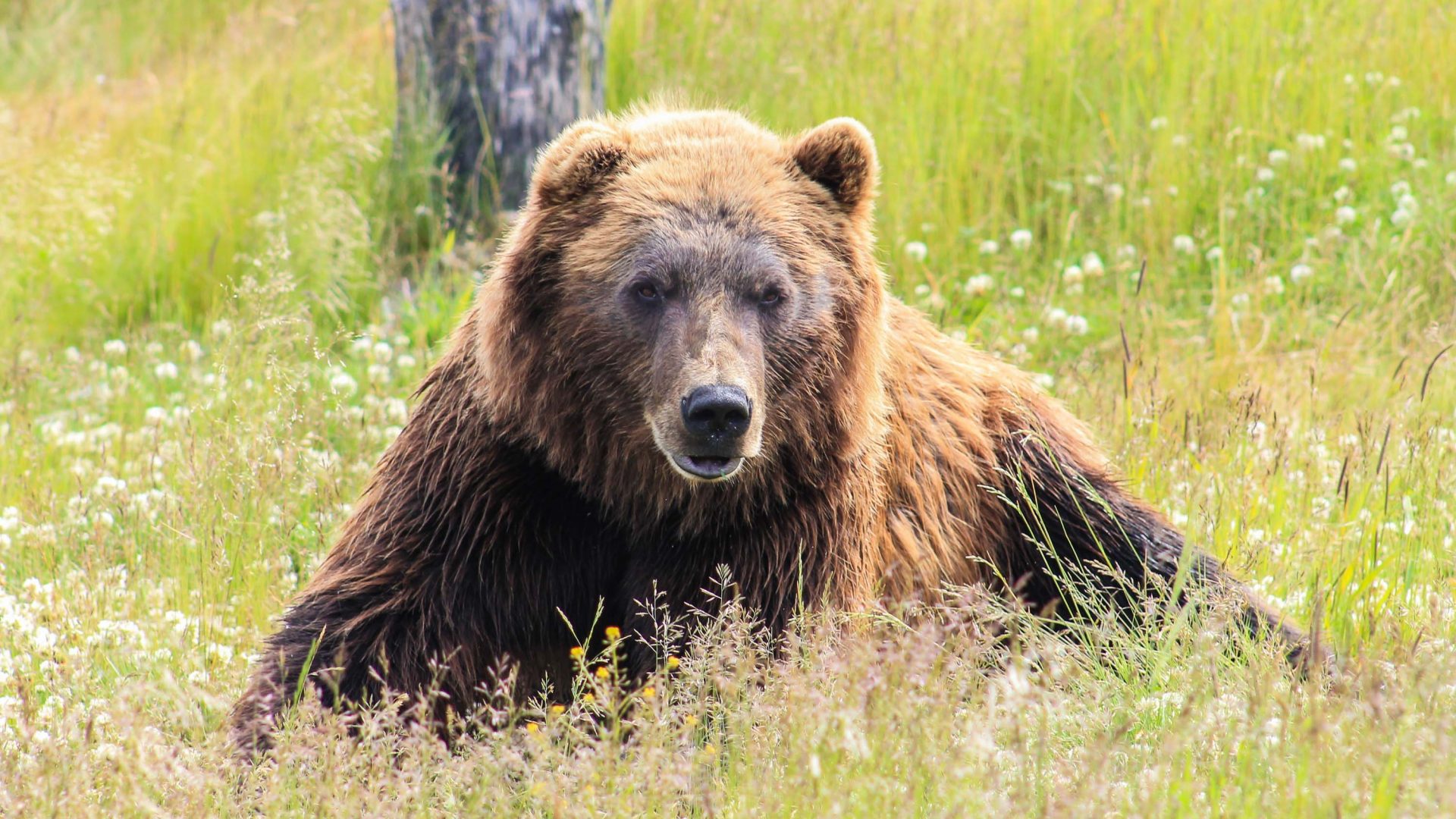It’s been a 10-year quest for travel writer Mark Stratton to see an aye-aye, one of Madagascar’s rarest lemurs, in the wild. Would this road trip end with a sighting?
Five years ago, I slipped a security guard €5 and snuck into Antananarivo zoo at night. I dislike zoos, but after a fruitless week of nocturnal searches for an aye-aye in Madagascar, I decided to at least see one in the flesh.
I’d duly located a cramped enclosure incarcerating two of these rare lemurs. A bright-orange pair of eyes burned from within the dark recesses of the cage and one shuffled slowly forward. Imagine Dr. Frankenstein cobbling together an identikit nightmare to scare little children? Take an anaemic face with a gargoyle’s comic grotesqueness, add Freddy Krueger’s eviscerating hands, and liberally sprinkle with alopecia.
“If a spaceship were to land on Earth, the creature most likely to emerge from its cargo doors is an aye-aye,” suggested Mark Carwardine and Douglas Adams in their conservation classic Last Chance to See.
Nonetheless, I’m extremely optimistic this time on a week-long road trip by minivan to the central-eastern coastal region; not only because it is a stronghold but because I’d be visiting several community conservation initiatives helping to provide a safe environment for such key species.
Take the villagers of Vohimana, 150 kilometers east of the capital Antananarivo. Since the 1990s, they’ve been liaising with a French-Madagascan NGO called L’Homme et l’Environnement on a community tourism project that’s enabled locals to move away from damaging slash-and-burn agriculture.
In doing so, they’ve protected 842 hectares of tropical forest reserve that’s home to lemurs, chameleons, and wild orchids. Unfortunately, nobody I spoke with there had ever clapped eyes upon an aye-aye.
The following day, I seek out another potential location called Andasibe-Mantadia National Park. Five years ago, during a night walk on my first visit to this park, the guide had shown me a bough gnawed by teeth marks. ‘This is an aye-aye, the bites are fresh,” she’d said, heightening my expectations.
She explained to me that once the aye-ayes locate their food, they tear open the bark with sharp fangs. But we’d walked for several hours around the margins of the park in drizzling rain without success—although myriad chameleons, stick insects, and brightly colored frogs scarcely qualified as a failed expedition.
RELATED: In search of the rare Ethiopian wolf on the rooftop of Africa
Alas, I draw yet another blank on this return to Andasibe-Mantadia. Another night walk fails to reveal anything other than color-shifting chameleons. And it rains again. The compensation this time is a visit to another useful project helping to protect Madagascar’s besieged wildlife, a community reserve at Analamazaotra called V.O.I.M.M.A (an acronym for ‘local people love the forest’). It’s a tiny fragment of native rainforest where visitors’ entrance fees have helped to protect as the money has funded projects for clean water and reforestation.
Following a local guide, it’s a short easy walk by torchlight through low palm forests swatting away mosquitoes. I’m ready for another long search but then, after 10 minutes, and without fanfare, three of them appear right before my eyes. Hold on. This is ridiculously easy? I recall all those evening walks and imagine the aye-ayes’ had been mocking me all this time: ‘Actually we’ve been on holiday on a small paradisiacal island rather than hanging round our natural habitat of damp rainforest.”
But mostly I just stand there, dumbstruck, gazing at a creature that e-fits the devil, unable at first to lift my camera. For a start, I’m blown away by their size—much bigger than the ones I’d seen in Antananarivo Zoo, and probably akin to the size of male foxes. They’re shredding coconuts placed by guides to lure them to the forest edge, and the ferocity of their gnashing teeth ripping at the husks is extraordinary.
And when the guide’s torchlight catches flashes of their pallid vampirish complexion, I could have been on the set of horror movie watching a remake of a zombie flick. It’s true they are hideously ugly and yet also beautiful in their adaptive features honed over Darwinian time: Huge antenna-like ears to capture the sounds of grub-tapping, and burning bright eyes for nocturnal vision.
As their long bony fingers grasp the coconuts, I also see their elongated middle digit: It truly is twice the length of the others. “They fill the niche of woodpeckers,” says our guide, Miandriarijawna, making a surprise comparison. “They rip open the branch and scoop out the larva with this long finger”.
Supplying the coconuts may make the experience slightly less-than-natural, but I’m pleased rules are enforced to just 45 minutes of contact. Also, of the seven aye-ayes, one is actually a youngster born on the island—a very positive sign for their conservation. After our group leaves, they will slink back into forest undisturbed and resume more traditional hunting techniques. In balance, low-impact tourism is a necessary price to pay to safeguard the future of this unique critter.
Just before departing, I received a long piercing stare from the ghostly face of one of them. Go toe-to-toe with an aye-aye and I guarantee you’ll blink first.
—-






